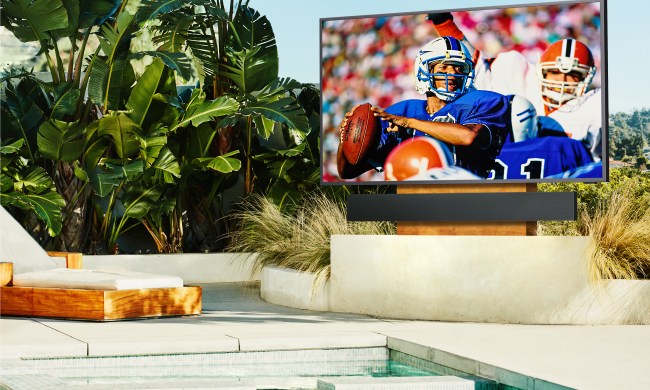Right now, LG’s OLED TVs are some of the nicest available. Samsung might be aiming to take down the competition using quantum dots, but Philips has decided to jump into the OLED waters as well, introducing its first OLED TV, the 901F, at IFA 2016.
Manufacturer TP Vision pulled out all the stops for the Philips-branded 55-inch set. Not only is 4K resolution supported, but HDR (High Dynamic Range) and wide color gamut squeeze as much performance out of the OLED panel as possible. The set is definitely impressive, and we haven’t even gotten to the feature list yet.
One way this TV sets itself apart from the competition is the Ambilight ambient lighting included on three sides of the set. This makes for ultra-colorful demos, but is also said to reduce eye strain when watching movies in dark rooms. Another unique feature of the TV will definitely be appreciated by those sick of weak sound in modern televisions: an integrated 6.1-channel, 30-watt sound bar.
The 901F gets its smarts from Android TV, and is Google certified, meaning users can access all the TV apps available in the Google Play Store. To make searching for apps and programming easier, the remote features a built-in QWERTY keyboard, meaning viewers won’t be stuck slowly typing in titles with a cumbersome on-screen keyboard.
In the end, the panel is the most important part here, and it’s a stunner, with 540-nit peak-light performance and the Perfect Contrast system, which as the name implies, makes for improved contrast. Philips’ Perfect Color system is included, with a 17-bit color booster and intelligent color processing for deep blacks, bright whites, and realistic skin tones.
No pricing information is available so far, nor has a firm release date been set, but the 901F is expected to ship by the end of this year. If prices for existing OLED sets are any indication, you’re not exactly going to be buying the 901F for pocket change.





